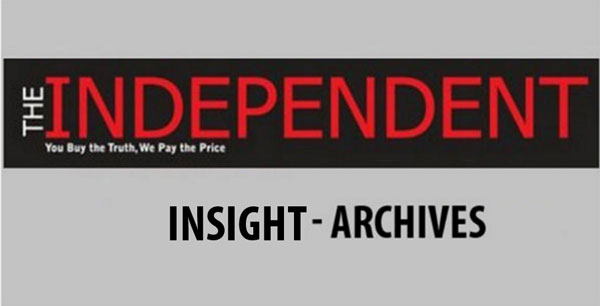
By Henry Zakumumpa
I was travelling through Frankfurt airport when, bored with the long wait for my next flight, I decided to peruse the headlines in one of the ubiquitous bookstores at the airport. I chanced on an August 2010 issue of Foreign Policy, the influential American magazine.
I have come to know Foreign Policy for matters of geopolitics, from China’s rise to the war in Afghanistan, so I was taken aback by a peculiar cover headline relating to US AIDS funding in Africa.
The article calls for a radical shift away from the billions of dollars spent by the United States through its President’s Emergency Plan for AIDS Relief (PEPFAR) for treating AIDS in Africa. The US has, through its PEPFAR programme, spent more than US$32 billion dollars to treat AIDS in the developing world since 2004, and in countries such as Uganda, it is funding up to 90% of all AIDS treatment costs.
The authors argue that US funding for AIDS treatment in Africa has eaten up a ‘˜disproportionate’ chunk of US development AID in Africa and that the US has lost out on the opportunity of using this aid to generate more geopolitical capital for the US. This is especially important in an era which has seen the rise of new competitors to US influence on the African continent, such as China.

Coming from a country that is a major PEPFAR beneficiary, I was troubled by the stance of the authors but what worried me even more is that the persistent voices calling for a radical reduction of US AIDS funding to Africa are building up to a point where a major policy review can no longer be ignored.
According to Dr Peter Mugyenyi of the Joint Clinical Research Centre(JCRC) and the International Treatment Preparedness Coalition (ITPC) 2010 report, the US is flat-lining its AIDS treatment funding in Africa meaning that it has reneged on promises to incrementally increase this funding and is only committing to budget caps of previous years.
The implication is that AIDS treatment centres in Uganda cannot enroll new patients because they have no budget lines to support new patients on this life-long treatment, even though recently some emergency supplies of AIDS medicines were made available by PEPFAR after hundreds were turned away at AIDS treatment centres across Uganda.
Clearly, the global financial crisis is a major factor in all this as the United States battles its worst economic crisis since the Great Depression but so too are political factors within the United States.
It has been reported in The New York Times, The Boston Globe and The Huffington Post in the US that the Obama Administration is intent on scaling down on PEPFAR funding, in favour of promoting a proposed new maternal and child health initiative in the developing world.
It is understood that Dr Ezekiel Emmanuel, a Senior Advisor at the White House, has been pushing this line within the Obama Administration. Politically speaking, PEPFAR was a Bush Administration initiative with enormous success and the Obama administration is in search of its own successful global health initiative.
‘Doubling or tripling PEPFAR’s funding is not the best use of international health funding,’ Dr Ezekiel Emmanuel is quoted as saying in Foreign Policy.
‘By extending funds to simple but more deadly diseases, such as respiratory and diarrheal illnesses, the US government could save more lives. For the amount now spent on ARV treatment, 44 million children could be vaccinated against diphtheria, polio, tetanus, and measles, and their families could receive insecticide-treated bed nets” he said.
Clearly, maternal and child health too is a continental emergency and the recent July 2010 African Union summit in the Ugandan capital focused on the subject. However, to cut AIDS treatment funding and renege on promises to incrementally scale up funding to treat the increasing number of patients in need of anti retroviral treatment in favour of a new pet project would be nothing short of tragic.
In a strategic and political sense the volumes of American funding of AIDS treatment in Africa cannot be sustained in the long term and indicators point to an imminent shift in US policy on AIDS funding earlier that many African governments have planned for.
The Uganda AIDS Commission in a March 2010 report estimates that currently 200,213 are enrolled on AIDS treatment which is about 51% of those in need. Ministry of Health projections however show that 100,000 new patients are added to the list of those in need of anti retroviral treatment annually. With increasing HIV/AIDS prevalence rates in Uganda, the demand for treatment will only increase over the next five years.
African governments therefore need to plan and prepare for a (soon approaching) scenario where the AIDS funding tap will run dry or at least reduce substantially. They will therefore need to plan to shoulder the increasing burden of treating their own citizens by living up to commitments such as the 2001 Abuja Declaration which calls for health spending of no less than 15% of national budgets.
The end of AIDS money is nigh. We are in the fog of the season’s end.
****
Henry Zakumumpa is an honourary correspondent in Uganda for InternationalHIV/AIDS Alliance of Brighton, United Kingdom.zakumumpa@yahoo.com
 The Independent Uganda: You get the Truth we Pay the Price
The Independent Uganda: You get the Truth we Pay the Price



